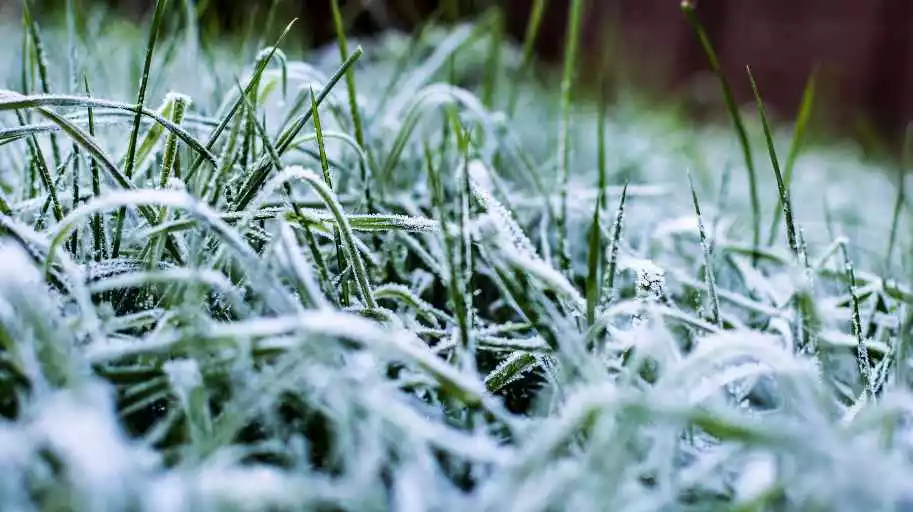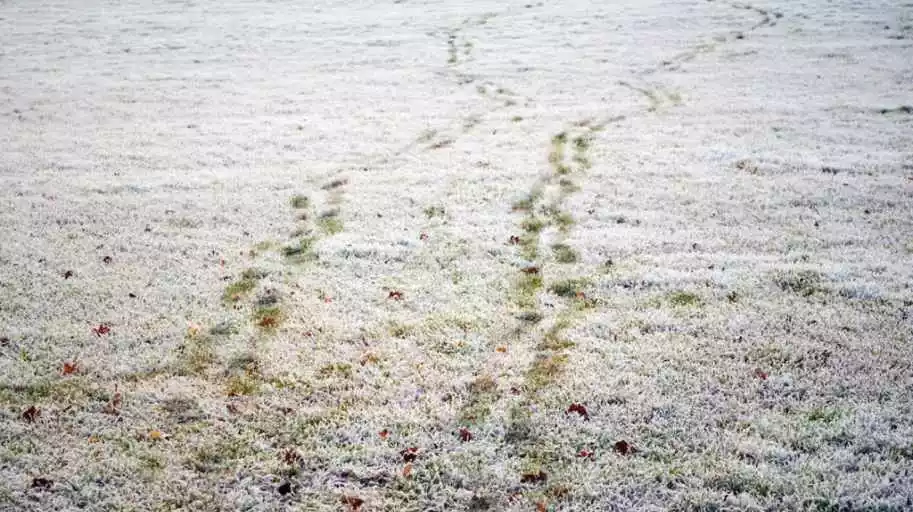Protecting your lawn from frost is crucial to ensuring that it grows appropriately. There are many ways to protect your new seed from frost, and this guide will give you a complete overview. We’ll show you all the tips and tricks for keeping your new seed safe!
How to Protect New Grass Seed From Frost in 7 Best Ways

Protecting new grass seed from frost is essential to ensure that it germinates and grows appropriately. There are several ways to do this, including covering the seed with a layer of straw, using a frost cloth, or simply waiting until the danger of frost has passed. If you live in an area where frost is common, it is best to sow your seed in late summer, or early fall after the risk of frost has passed. However, there are still ways to protect your seed if you still need this luxury.
Use straw to protect new from frost
Straw is an effective way to insulate the ground and prevent the seed from freezing. Spread a straw over the seeded area, then top it with another layer of soil. This will help to keep the ground warm and encourage the seed to germinate.
During extreme cold snaps, covering the area with a layer of straw or burlap will protect the seedlings from frost damage. Remove the covering as soon as temperatures rise above freezing to avoid damaging the new grass. With a little care, you can protect your new grass seedlings from frost damage and enjoy a healthy lawn all season long.
Use a frost cloth
Frost cloth is another option for protecting new grass seeds. This fabric is thin and porous, so water and air can get to the seed, but it still protects the seed from the cold. You can find frost cloth at most garden stores or make your own by cutting a plastic sheet into small squares. Once the danger of frost has passed, you can remove the coverings and allow the seed to grow.

Use a thin layer of black plastic tarp
We all know that frost can damage new grass, but did you know that you can use a black plastic tarp to prevent frost from harming your lawn during cold nights? Lay the tarp over the affected area in the evening and when you wake up in the morning, take off the tarps so that the grass can breathe and get some sunlight.
The heat from the sun will help to keep the ground from freezing. The tarp will also help hold in moisture, preventing the soil from drying. Just be sure to remove the tarp once the danger of frost has passed, or you may find your lawn suffocating under the plastic.
Proper irrigation before planting
Before planting new grass seeds, it is essential to irrigate the land. This will help the grass to grow strong and resist frost. Here are some tips on how to effectively irrigate the land:
The first step is to determine how much water the land needs. This can be done by using a soil moisture meter.
Once you know how much water the land needs, you can choose an irrigation method. There are many different types of irrigation systems, so selecting the one best suited to your needs is crucial.
When choosing an irrigation system, it is also essential to consider your soil type. For example, if you have sandy soil, you will need an irrigation system that can quickly provide a lot of water.
Following these tips ensures that your new grass seed will have the best chance of growing strong and resisting the frost.
Watering the turf to prevent freeze
Gardening in winter can be challenging, but there are some measures you can take to help your plants survive the cold weather. One of those is to water the turf before it freezes. This will keep new grass seeds from freezing and the soil from drying out.
The temperature of the water that comes out of your faucet is generally at least 20 degrees higher than freezing. You may prevent frost from accumulating on the ground in the morning by applying warm water at night. This is one of the most effective strategies for preventing frost damage to young grass.
If your watering system has the capability of a timer, you should set it to water for a quarter of an hour once every three hours while you are asleep. Be sure to water at tolerable levels so that the sun can help to evaporate any excess water.
Avoid stepping on the new grass seed
New grass seed is delicate and easily damaged. Avoid stepping on the new grass seed to prevent damage during frost. Frozen water molecules rupture plant cell walls, harming juvenile blades of grass when walking. If you must walk on the grass, place a board or tarp over the area to distribute your weight. Be sure to remove the board or tarp when temperatures rise to avoid damaging the grass.

Fertilization during autumn
As any gardener knows, frost can be devastating to new grass seedlings. The cold weather can damage the delicate blades, making it difficult for the grass to take root and grow. One way to protect new grass seeds from frost is to fertilize the land during the autumn. This helps promote growth and strengthen the grass before winter sets in.
Fertilizing in autumn also helps to improve the quality of the soil, making it more hospitable for new growth in the spring. In addition, fall is an excellent time to seed because the cooler weather helps the seedlings establish themselves more quickly. By taking these simple steps, you can help your new grass seedlings survive the winter and thrive in the spring.
Frequently Asked Questions (FAQs)
Will frost kill grass seed?
The straightforward answer is “no.” but that does not mean you can relax at the time; you should take some necessary steps to prevent damage to your grass.
If my new grass turns brown after a frost, is that bad?
The answer is “maybe.” The grass may become brown as a defense against a light freeze. It should recover after a few days if you treat it normally. However, if the discoloration persists, there may have been a hard freeze, and you must reseed your lawn in the spring. Also, you can check for fall brown patch fungus. Treatment may save your yard in this case.

What temperature causes lawn frost?
The turf will frost at 32 degrees Fahrenheit.
What temperature is too cold to plant grass seed?
It would be best if you didn’t plant grass seed until the average high temperature for the day is at least sixty degrees Fahrenheit.
Can you plant new grass seeds during frost?
You should avoid planting new grass seeds when there is a danger of frost.
Does raking leaves in frost damage grass?
Yes, it does. Do not pull metal or plastic tines through your grass during frost. Your grass is vulnerable after a hard frost. You can use a leaf blower for minor cleanup.
When is new grass safe from frost?
Your new grass will survive light frost and no soil freezing. Until the ice melts, don’t walk or drive on the grass.
How to protect ornamental grass from frost?
A substantial mulch covering is the most effective method for preventing frost damage to ornamental grasses.
Verdict
While frost can damage new grass seed, there are ways to protect it. Apply a layer of mulch to help insulate the ground and protect the roots of your plants. By taking these steps, you can ensure that your lawn survives the winter season and stays healthy and lush.



